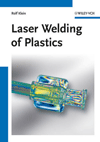
Janda’s upgraded welding machines are controlled with an Allen-Bradley MicroLogix or SLC 500 PLC or CompactLogix PAC. The change lets users perform safer manual welding, increase productivity, improve part quality and reduced scrap. Photo courtesy Rockwell Automation
Rather, the company’s machines use either a programmable logic controller (PLC) or programmable automation controller (PAC). This one change benefits Janda’s customers in several ways: safer manual welding, greater productivity, higher quality parts and reduced scrap due to more accurate welds.
“The older control system was sufficient when customers needed tolerances of one-eighth inch,” says Bob White Jr., president of Janda. “But now, customers are demanding tolerances as small as one-ten-thousandth inch.”
Because Janda ships machines all over the world, the company needed an automation supplier that could provide support globally, and a control platform that could be monitored and repaired from anywhere. Janda engineers turned to Rockwell Automation, which makes Allen-Bradley relays and switches that Janda has used for more than 40 years.
Standard Janda welding machines now feature the Allen-Bradley MicroLogix or SLC 500 PLC. High-performance machines that need a small footprint are equipped with a CompactLogix PAC.
Because the control platform is scalable, Janda is able to match the control requirements of each customer and automate the entire welding process, says White. In addition, the controllers are equipped with EtherNet/IP for connectivity, enabling Janda to repair any programming glitches on installed machines from anywhere in the world.
For example, engineers at the company’s Corona, CA, facility recently monitored a PLC on a welding machine in Korea that was experiencing a programming issue. They quickly identified and fixed the problem.
For customers with tight tolerance requirements, Janda equips its welding machines with an Allen-Bradley Ultra 3000 servo drive and Sercos interface motion module.
The Ultra3000 servo drive, which is paired with an Allen-Bradley MP-Series low inertia servo motor, allows precise positioning and control of either the welding table or the weld guns. The result: reduced scrap due to inaccurate welds.
Also, because the entire machine is controlled on a single platform, it can be operated by just one person. White says that one customer increased production from 30 quality parts per hour to 200 higher-quality parts per hour, while using four less personnel.
Each Janda welding machine also features a touch-screen Allen Bradley PanelView Plus HMI, which allows users to easily view the machine’s schedule or reset the machine remotely if needed.
The control platform upgrade has also helped Janda reduce both the cost and time required to build their welding machines. Instead of buying 25 to 50 relays per machine-which took up to eight hours to install-Janda now purchases a single controller that takes just 20 minutes to program.
For more information on control platforms, call 414-382-2000 or visit www.rockwellautomation.com.



